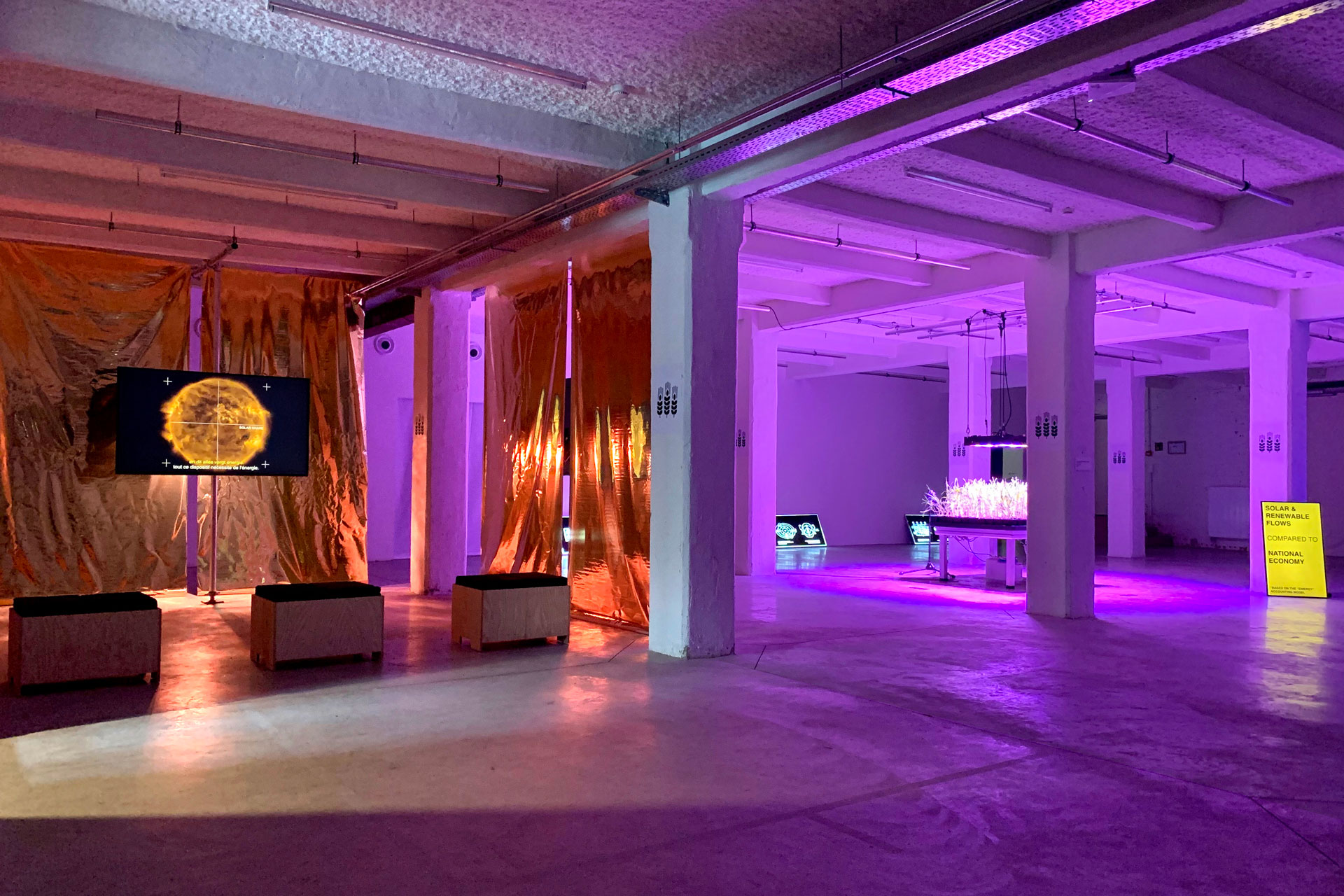POST GROWTH TOOLKIT (THE GAME), 2020
The Earth’s ecosystems are undergoing irremediable changes as a result of human development, the source of a number of crises whose consequences can be measured on the scale of the planet. Rethinking our way of coexisting with our environment requires us to reevaluate the continuous growth of our energy footprints. These prototypes of critical games ‘Post Growth Toolkit’ are invitations to reprogram ourselves out of the economic growth orthodoxy. The series highlights the material conditions necessary to maintain our current standard of living in order to better understand how we may reproduce these differently.
At the intersection of science and speculative fiction, the ‘Post Growth Toolkit’ game proposes to literally reshuffle our world-views and to share stories, concepts and objects to re-examine how we are programmed and to stimulate new modes of understanding. It takes the form of a tactical card game: where small groups of players are invited to explore a number of key notions. The game becomes a means of transmission and collective debate intended to help participants find their bearings in a period of radical change.
DOWNLOAD THE GAME: POSTGROWTH.ART
CONCEPTION: DISNOVATION.ORG, JULIEN MAUDET, BARUCH GOTTLIEB, PAULINE BRIAND AND CLEMENCE SEURAT
CONTRIBUTORS: DASHA ILINA, YUBO DONG, MACHA SAVYKINE, CAMILLE MARTENOT
INSTALLATION, ILLUMINATED GAME BOARDS, PLAYING CARDS, ONLINE RESOURCE PLATFORM, TAKE AWAY POSTERS
PRODUCTION: iMAL (BE) | COPRODUCTION: Biennale Chroniques (FR) | WITH SUPPORT FROM: Production Intérieure Brute (FR), ArTeC Paris (FR), La Labomedia Orléans (FR), CNC (Dicréam)(FR)
SPECIAL THANKS TO CATHERINE LENOBLE

Contact and press inquiries: Email: contact[at]disnovation.net
3 BIS F, Aix-en-Provence, 2020 [FR]
Science Gallery, Detroit, 2020 [US]
Press Kit & HD Images: Flickr
Production: iMAL Brussels (BE) | Coproduction:Biennale Chroniques, Aix-en-Provence (FR) | With The Support Of: Production Intérieure Brute (FR), ArTeC Paris (FR), Le Labomedia Orléans, (FR) CNC (Dicréam)(FR), University of California Irvine (USA)

At the intersection of science and speculative fiction, the ‘Post Growth Toolkit’ game proposes to literally reshuffle our world-views and to share stories, concepts and objects to re-examine how we are programmed and to stimulate new modes of understanding. It takes the form of a tactical card game: where small groups of players are invited to explore a number of key notions. The game becomes a means of transmission and collective debate intended to help participants find their bearings in a period of radical change.
DOWNLOAD THE GAME: POSTGROWTH.ART
CONCEPTION: DISNOVATION.ORG, JULIEN MAUDET, BARUCH GOTTLIEB, PAULINE BRIAND AND CLEMENCE SEURAT
CONTRIBUTORS: DASHA ILINA, YUBO DONG, MACHA SAVYKINE, CAMILLE MARTENOT
INSTALLATION, ILLUMINATED GAME BOARDS, PLAYING CARDS, ONLINE RESOURCE PLATFORM, TAKE AWAY POSTERS
PRODUCTION: iMAL (BE) | COPRODUCTION: Biennale Chroniques (FR) | WITH SUPPORT FROM: Production Intérieure Brute (FR), ArTeC Paris (FR), La Labomedia Orléans (FR), CNC (Dicréam)(FR)
SPECIAL THANKS TO CATHERINE LENOBLE

Exhibited at:
iMAL, Brussels, 2020 [BE] 3 BIS F, Aix-en-Provence, 2020 [FR]
Science Gallery, Detroit, 2020 [US]
Press Kit & HD Images: Flickr
Production: iMAL Brussels (BE) | Coproduction:Biennale Chroniques, Aix-en-Provence (FR) | With The Support Of: Production Intérieure Brute (FR), ArTeC Paris (FR), Le Labomedia Orléans, (FR) CNC (Dicréam)(FR), University of California Irvine (USA)
